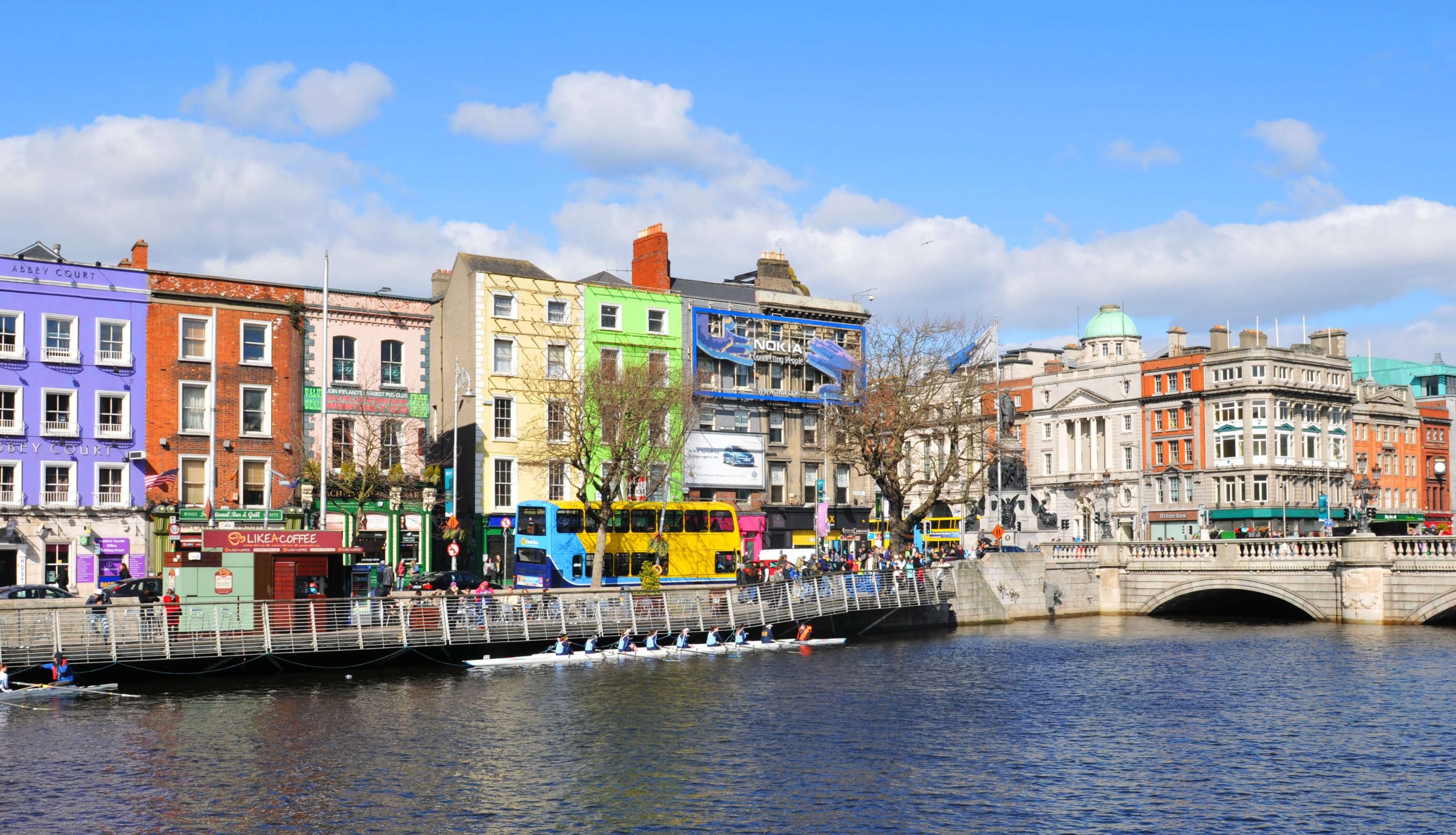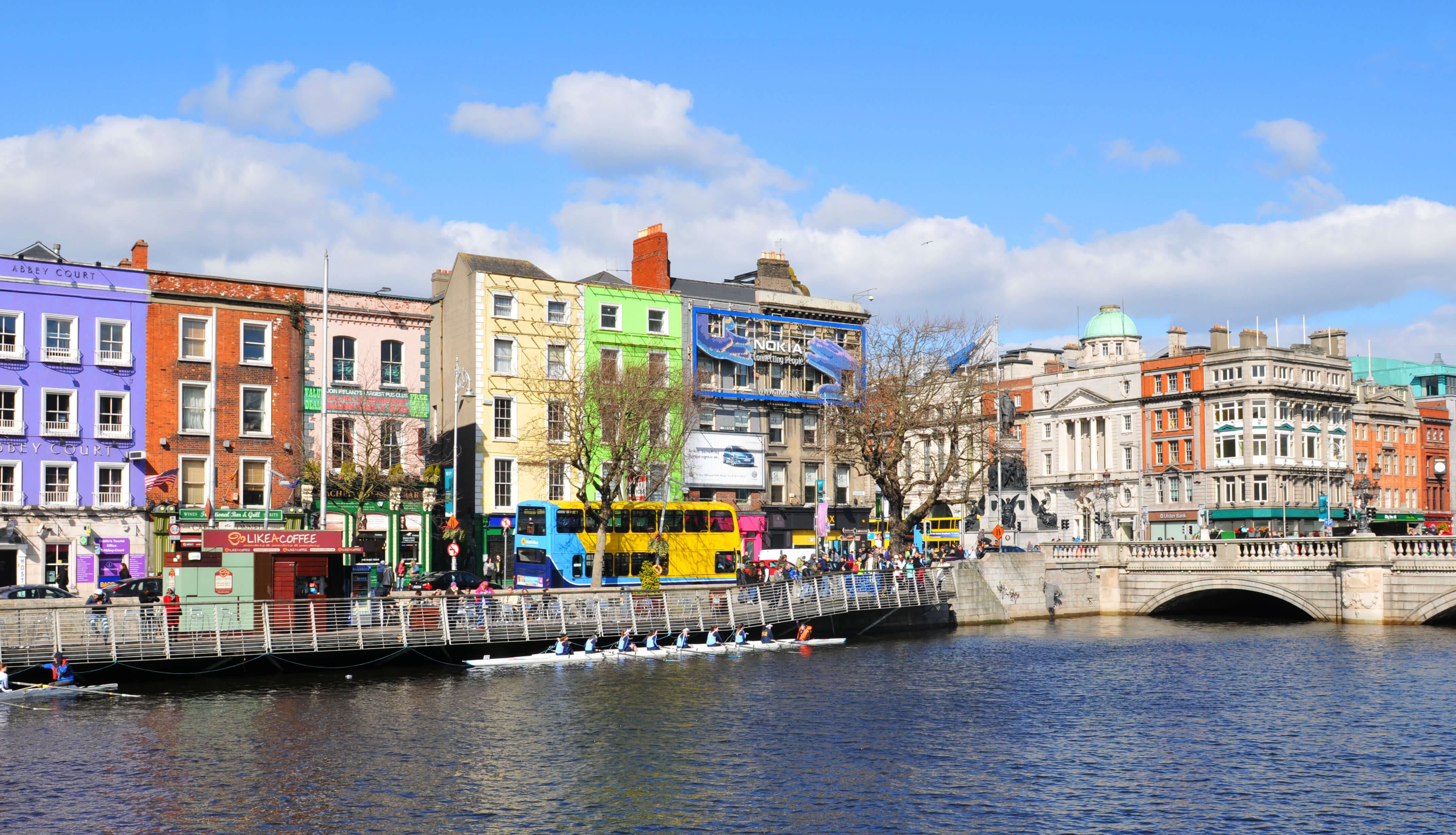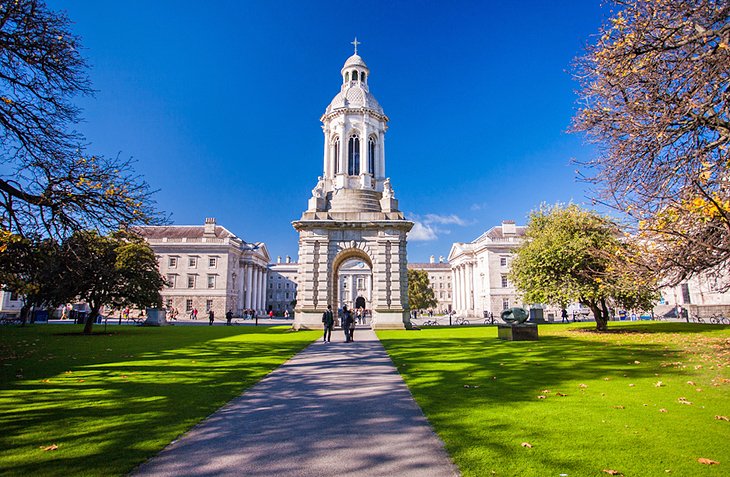
Dublin, the vibrant capital of Ireland, is a city that dances to its own rhythm. It’s a place where ancient history whispers from cobblestone streets, where literary giants have left their indelible mark, and where a warm, infectious spirit permeates every pub, park, and piazza. From the hallowed halls of Trinity College to the lively atmosphere of Temple Bar, Dublin offers a captivating blend of heritage, culture, and modern energy that draws visitors from across the globe. Prepare to be enchanted by its charm, its stories, and its undeniable allure.
Top Attractions: A Tapestry of Dublin’s Treasures
Dublin boasts a wealth of attractions, each offering a unique glimpse into its rich past and dynamic present. Here are some of the absolute must-sees:

Related Articles about Dublin: A City Steeped in Song, Stories, and Spirit:
- Turkey: Where East Meets West in a Kaleidoscope of Wonders
- Norway’s Enchanting Embrace: A Journey Through Its Best Hotels and Unforgettable Experiences
- Kyoto: A Journey Through Japan’s Soulful Ancient Capital
- Egypt: A Timeless Tapestry of Wonders – Unveiling the Top Attractions and Essential Travel Guide
- Canada: A Land of Breathtaking Wonders and Unforgettable Experiences
-
Trinity College Dublin: No visit to Dublin is complete without stepping onto the grounds of Ireland’s oldest university. Founded in 1592, Trinity exudes an atmosphere of academic gravitas and timeless beauty. The Long Room in the Old Library is a breathtaking sight, with its towering shelves of ancient books and the iconic Book of Kells, a beautifully illuminated manuscript from the 9th century. Allow ample time to wander the quadrangles and soak in the centuries of scholarly pursuit.
-
Dublin Castle: Once the seat of British power in Ireland, Dublin Castle is a fascinating historical complex that has witnessed pivotal moments in Irish history. Explore the State Apartments, the medieval Undercroft, and the Chapel Royal. The castle grounds offer a tangible connection to the island’s complex past, from Viking settlements to its role in shaping modern Ireland.
-
St. Patrick’s Cathedral: As the national cathedral of the Church of Ireland, St. Patrick’s is a magnificent Gothic masterpiece with a history stretching back to 1191. Its soaring spires and intricate stonework are awe-inspiring. Pay homage to Jonathan Swift, its former Dean, who is buried within its walls. The cathedral’s serene atmosphere offers a welcome respite from the city’s bustle.

-
Christ Church Cathedral: The older of Dublin’s two medieval cathedrals, Christ Church dates back to 1030. Its crypt, the largest in Ireland and Britain, is a dimly lit, atmospheric space that houses ancient artifacts and stone effigies. The cathedral itself is a stunning example of Gothic architecture and a testament to Dublin’s enduring faith and history.
-
Guinness Storehouse: For many, a pilgrimage to the Guinness Storehouse is an essential Dublin experience. This multi-story attraction celebrates the iconic stout, offering a comprehensive journey through its history, brewing process, and cultural significance. The highlight for many is the Gravity Bar at the top, offering panoramic 360-degree views of Dublin while you enjoy a perfectly poured pint.
-
Temple Bar: While often described as a tourist trap, Temple Bar remains a lively and iconic Dublin district. Its narrow cobblestone streets are lined with traditional pubs, brimming with live traditional Irish music every night. While it can be crowded and pricier, the atmosphere is undeniably electric, and it’s a fantastic place to experience the heart of Dublin’s social scene.
-
Kilmainham Gaol: This former prison holds a poignant and often harrowing place in Irish history. It was the site of many executions of Irish rebels, including the leaders of the 1916 Easter Rising. A guided tour of Kilmainham Gaol is a deeply moving experience, offering a powerful insight into the struggle for Irish independence.
-
National Museum of Ireland: Divided into four distinct branches, the National Museum of Ireland offers an unparalleled exploration of Ireland’s heritage. The Archaeology branch, located on Kildare Street, houses extraordinary prehistoric gold artifacts and Viking treasures. The Decorative Arts & History branch in Collins Barracks showcases military history, furniture, and fashion. The Natural History museum, often called the "Dead Zoo," is a charming collection of taxidermied animals.
-
Phoenix Park: One of Europe’s largest enclosed urban parks, Phoenix Park is a verdant oasis offering a welcome escape from the city. Home to wild fallow deer, Dublin Zoo, and Áras an Uachtaráin (the residence of the President of Ireland), it’s a perfect spot for a leisurely stroll, a picnic, or a bike ride.
-
Grafton Street: Dublin’s premier shopping street is more than just a place for retail therapy. It’s a vibrant hub where street performers, musicians, and artists entertain passersby. The atmosphere is always buzzing, and it’s a great place to people-watch and soak up the city’s lively spirit.
A Glimpse into Dublin’s Rich History
Dublin’s history is a captivating saga, stretching back over a millennium. Founded by the Vikings as Dubh Linn (Black Pool) in the 9th century, its strategic location on the River Liffey quickly made it a significant trading post. The Normans arrived in the 12th century, solidifying their control and building Dublin Castle, which would serve as the center of English power in Ireland for centuries.
The city witnessed periods of prosperity and hardship, of rebellion and repression. The Act of Union in 1801 abolished the Irish Parliament, further consolidating British rule. The Great Famine of the mid-19th century devastated the population and fueled resentment.
The early 20th century was marked by the fight for independence. The Easter Rising of 1916, though initially unsuccessful, became a pivotal moment in the struggle. The Irish War of Independence followed, culminating in the establishment of the Irish Free State in 1922.
Since then, Dublin has undergone significant transformation, evolving into a modern European capital while fiercely preserving its unique cultural identity. Its history is etched into its architecture, its street names, and the very spirit of its people.
Travel Tips for a Seamless Dublin Adventure
To make the most of your Dublin experience, consider these practical tips:
- Embrace the Walking Culture: Dublin is a wonderfully walkable city. Many of the top attractions are clustered within the city center, making it easy to explore on foot. Wear comfortable shoes!
- Public Transport: For longer distances, Dublin Bus and the Luas (tram system) are efficient and reliable. Consider purchasing a Leap Visitor Card for easy tap-on/tap-off travel.
- Book Ahead: For popular attractions like the Guinness Storehouse and Kilmainham Gaol, booking tickets in advance is highly recommended, especially during peak season, to avoid disappointment and long queues.
- Currency: The currency in the Republic of Ireland is the Euro (€).
- Language: English is spoken by everyone, but you’ll also hear Gaeilge (Irish Gaelic), particularly in official signage and cultural contexts.
- Pub Etiquette: Tipping is not as ingrained as in some other countries, but a small tip for good service is appreciated. It’s customary to order at the bar.
- Weather Preparedness: Dublin’s weather can be famously unpredictable. Pack layers, a waterproof jacket, and an umbrella, regardless of the season.
- Embrace the "Craic": "Craic" (pronounced "crack") is an Irish word for fun, enjoyment, and good conversation. Don’t be afraid to strike up a conversation with locals in pubs or shops; you’ll often find them friendly and eager to share their city.
- Free Attractions: Many of Dublin’s excellent museums and galleries offer free admission, making it an affordable city to explore.
Accommodation Options: From Boutique Charm to Budget-Friendly Stays
Dublin offers a diverse range of accommodation to suit every budget and preference:
- Luxury Hotels: For a lavish experience, consider hotels in the Ballsbridge or Merrion Square areas, known for their elegant Georgian architecture and top-tier service. Many offer stunning views and world-class amenities.
- Boutique Hotels: Dublin has a growing number of stylish boutique hotels, often housed in beautifully restored Georgian townhouses. These offer a more intimate and personalized experience.
- Mid-Range Hotels: You’ll find a plethora of comfortable and well-located mid-range hotels throughout the city center and surrounding neighborhoods. These offer a good balance of comfort and affordability.
- Guesthouses & Bed & Breakfasts: For a more traditional Irish experience, opt for a guesthouse or B&B. You’ll often find charming, family-run establishments offering a warm welcome and hearty breakfasts.
- Hostels: Dublin has an excellent selection of vibrant and social hostels, perfect for budget travelers and solo adventurers. Many offer private rooms as well as dormitories.
- Apartment Rentals: For longer stays or for those seeking more independence, apartment rentals through platforms like Airbnb can be a great option, allowing you to live like a local.
Neighborhoods to Consider:
- City Centre (Grafton Street/Temple Bar): Ideal for those who want to be in the heart of the action, with easy access to attractions and nightlife. Can be noisy.
- Ballsbridge: An affluent and elegant suburb, known for its leafy streets and proximity to the RDS. Offers a more peaceful atmosphere.
- Portobello: A trendy and bohemian neighborhood with a lively canal, independent shops, and great restaurants.
- Smithfield: An up-and-coming area with a blend of historic buildings and modern developments, home to the Jameson Distillery.
Transportation in Dublin: Navigating the City with Ease
Getting around Dublin is generally straightforward:
- Walking: As mentioned, the city center is highly walkable, and this is often the best way to discover hidden gems.
- Dublin Bus: The extensive bus network covers most of the city and its suburbs. Services are frequent and run throughout the day and into the night.
- Luas: Dublin’s light rail tram system consists of two lines (Red and Green) that connect various parts of the city. It’s a convenient option for reaching areas not well-served by buses.
- DART (Dublin Area Rapid Transit): This coastal commuter train line runs along the east coast of Ireland, offering scenic journeys to charming seaside towns like Howth and Dún Laoghaire, easily accessible from Dublin.
- Taxis & Ride-Sharing: Taxis are readily available throughout the city, and ride-sharing apps are also operational.
- Cycling: Dublin is becoming more bike-friendly, with bike rental schemes available. However, be mindful of traffic.
Leap Visitor Card: This prepaid card is highly recommended for tourists. It offers unlimited travel on Dublin Bus, Luas, DART, and Commuter Rail within the Dublin area for a set number of days (e.g., 24, 72, or 168 hours). It’s a cost-effective and hassle-free way to explore.
Best Time to Visit Dublin: Chasing the Emerald Isle’s Charm
Dublin can be enjoyed year-round, but each season offers a distinct experience:
- Spring (March – May): This is a beautiful time to visit as the city awakens from winter. Expect blooming flowers, fewer crowds than summer, and milder temperatures. The days start to get longer, perfect for exploring.
- Summer (June – August): The most popular time to visit, with the warmest weather, longest daylight hours, and a vibrant festival scene. However, it’s also the busiest and most expensive period. Book accommodation and flights well in advance.
- Autumn (September – November): Autumn offers a wonderful balance of pleasant weather, fewer crowds, and stunning fall foliage, especially in the parks. The atmosphere becomes cozy, and pub life is particularly inviting.
- Winter (December – February): While the weather can be cold and wet, Dublin in winter has its own unique charm. The city is beautifully decorated for Christmas, and there’s a cozy, intimate feel to the pubs and cafes. Prices are generally lower, and you’ll encounter fewer tourists.
Key Considerations:
- St. Patrick’s Day (March 17th): If you want to experience the heart of Irish celebrations, this is the time. Be prepared for massive crowds and book very far in advance.
- Festivals: Dublin hosts numerous festivals throughout the year, from literary and film festivals to music and arts events. Check event listings when planning your trip.
Dublin is a city that rewards exploration. It’s a place where every corner turned reveals a new story, a new melody, or a new friendly face. Whether you’re drawn by its historical significance, its literary heritage, its vibrant pub culture, or simply the promise of a warm Irish welcome, Dublin is a destination that will undoubtedly capture your heart and leave you with memories to cherish long after you’ve departed its shores. So, pack your bags, open your mind, and prepare to fall under the spell of this enchanting Emerald Isle capital.





